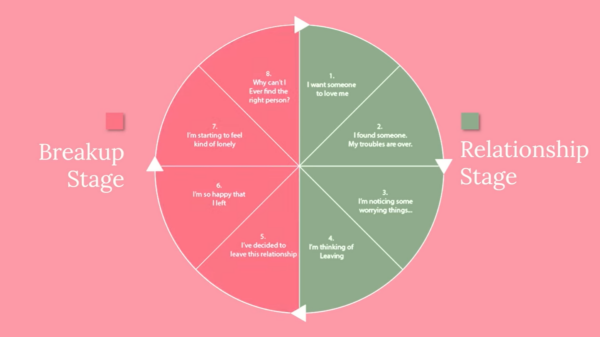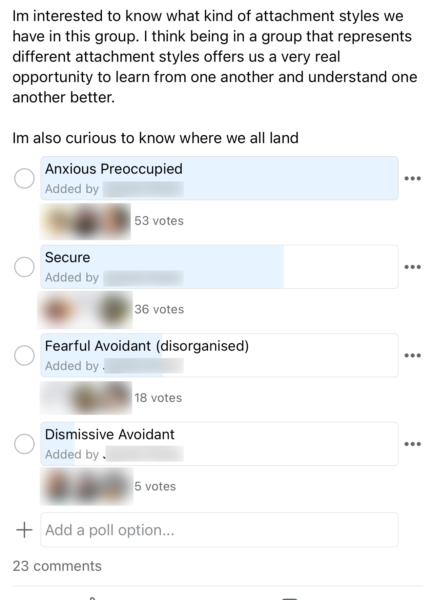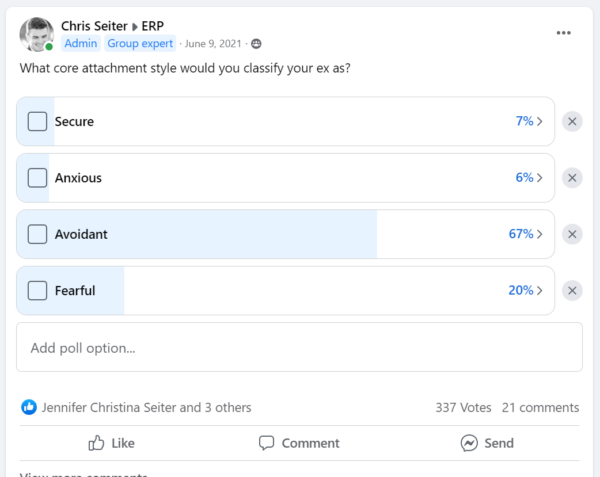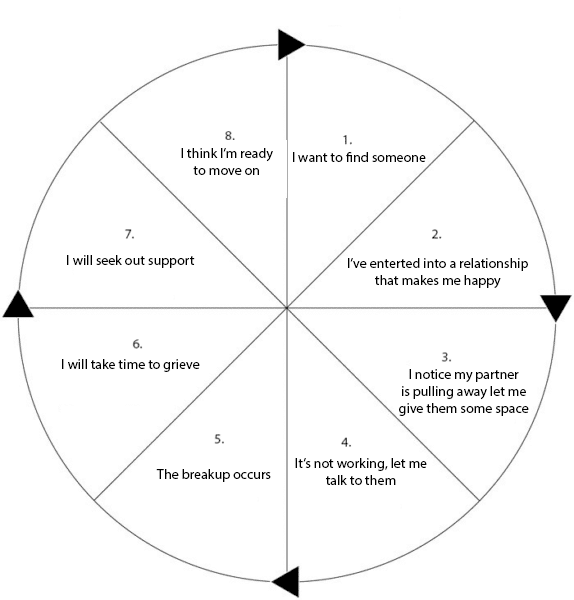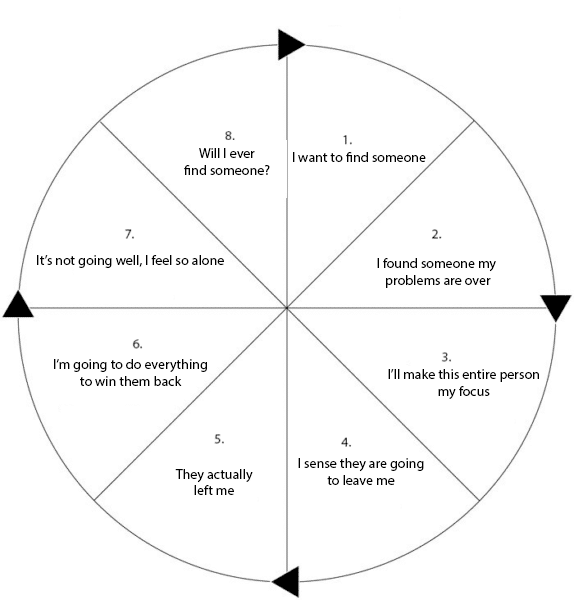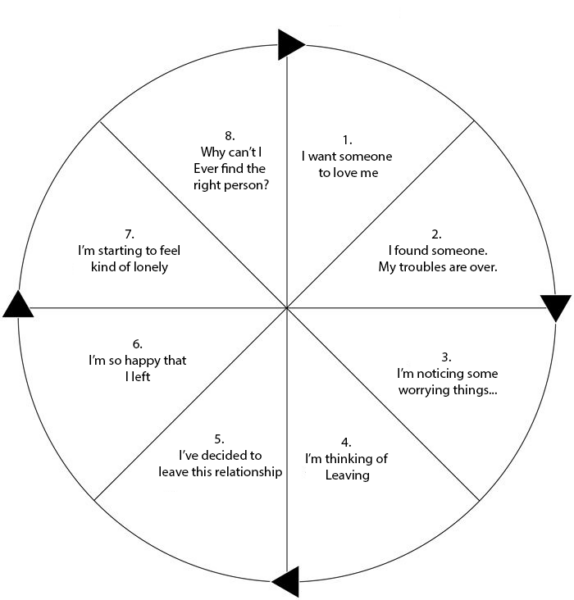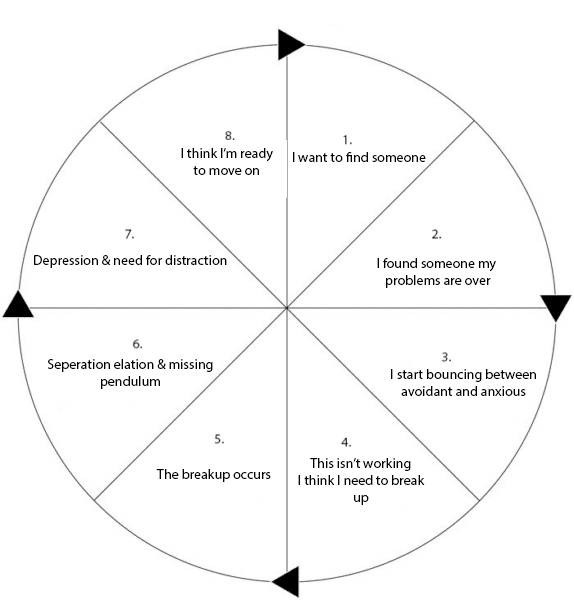I’ve always found that it’s incredibly tricky to determine what the hardest part of a breakup is. In fact, when doing research for this discussion I was actually surprised at how many articles were out there that gave “exact timeframes” for when you can expect the hardest part of a breakup to occur.
Here’s the reality.
The first thing you need to understand is that anyone who provides a specific timeframe for the universally hardest part of a breakup is likely to be inaccurate. What I’ve learned from my decade of experience at Ex-Boyfriend Recovery is the undeniable fact that everyone has a unique situation. Each person processes breakups differently and has their own attachment style. Therefore, experiences will vary from one individual to another.
With that in mind, what we can offer is education on core attachment styles, highlighting their experiences from the beginning to the end of a relationship. We can also identify specific periods when certain individuals may struggle the most after a breakup.
And so I just spent the last two hours constructing what I call the 4 different death wheels. What I’m going to do is take you through these four death wheels and then pinpoint the areas of which individuals are most likely to struggle with a breakup.
Sound good?
Let’s go!

What Are Your Chances of Getting Your Ex Boyfriend Back?
Take the quizThe Four Relationship Death Wheels
I’m renowned for discussing my “avoidant death wheel.”
I’ve addressed this topic on YouTube,
Created graphics about it,
And written numerous articles on it to the point that I think it’s annoying.
While this concept has garnered interest, I believe we can extend it to other core attachment styles. Consequently, I’ve dedicated two hours to crafting death wheels for all the attachment styles which means we’re going to cover,
- The Secure Death Wheel
- The Anxious Death Wheel
- The Avoidant Death Wheel
- The Fearful Avoidant Death Wheel
My aim is to educate you on the appearance and dynamics of these death wheels, pinpointing the challenges each attachment style encounters post-breakup.
By understanding your own or your ex’s attachment style, you can anticipate the toughest moments of the breakup.
Let’s commence with the secure death wheel.
The Secure Death Wheel
Based on our surveys, only about 32% of our clients identify with a secure attachment style,
While a mere 7% of our clients’ exes do the same.
This suggests that individuals with a secure attachment style are often the ones being broken up with.

What Are Your Chances of Getting Your Ex Boyfriend Back?
Take the quizOne salient characteristic of securely attached individuals is their proficiency in emotion regulation and problem-solving. Research from the Attachment Project indicates that breakups are least common among securely attached individuals, which aligns with our data.
So, what does a breakup journey look like for them?
- Initially, like everyone, they seek companionship.
- Upon entering a relationship, they assess its gratification levels.
- When sensing their partner’s growing detachment, they offer space rather than pressuring them.
- If this distance seems unproductive, they’ll initiate a dialogue. Their aptitude for emotional regulation and healthy communication aids this approach.
- If these attempts fail, they face the breakup
- Which is followed by a grieving phase.
- They then seek support
- Which eventually leaves to them feeling healed and prepared to progress.
The crux of their breakup pain likely occurs during the grieving and support-seeking phases, stages six and seven.
However, identifying the most challenging phase for securely attached individuals isn’t straightforward. They possess a natural confidence in their resilience, viewing grief as an intrinsic healing component, and never succumbing to it entirely.
So, while grieving and seeking support might be their most challenging phases, they handle them better than their insecure counterparts.
Now, focusing on insecure attachment styles, let’s explore the anxious death wheel.
The Anxious Death Wheel
Now, according to our polling, 47% of our clients have an anxious attachment style,
Compared to only 6% of our clients’ exes.
Thus, it’s highly probable that the individual being broken up with—and likely the average reader of this article—will have an anxious preoccupied attachment style.
The defining feature of an anxious preoccupied attachment style is a deep-rooted fear of abandonment. Anything that activates this core wound will often induce anxiety. Breakups, inherently, resonate with this core wound for an anxious individual.
As one can envision, they grapple immensely throughout the death wheel.
Here’s the breakup journey for someone with an anxious preoccupied attachment style:
- You aspire to find someone.
- You’ve found someone and believe your troubles are resolved.
- You prioritize this person to prevent losing them. Here, we see the core wound manifesting. The mindset for an anxious person might be: if I excel in this relationship and make no mistakes, they won’t leave.
- Yet, this can result in smothering the partner, and you inadvertently become the saboteur.
- Sensing their potential departure, you intensify your efforts to prevent this abandonment, ironically pushing them away.
- However, anxious individuals are inherently problem solvers. In their perspective, they’ll pull out all stops to reconcile.
- If unsuccessful, loneliness engulfs them.
- Plagued by self-doubt—why does this keep happening? Will I ever find someone?—they return to the start of the wheel, perpetuating the cycle.
What intrigues me about the anxious attachment style is their continuous struggle until a new relationship is formed.
This aligns with our understanding: those with anxious attachment styles are often highly codependent. A person with codependent tendencies feels incomplete outside a relationship.
Hence, the post-breakup ordeal for an anxious person only dissipates upon finding a new partner.
This behavior aligns with their core wound—a dread of abandonment. Post breakup, their primary efforts are channeled towards reconciliation. If this fails, their desolation deepens, leading to questions about future prospects. The cycle breaks when they reunite with their ex or find a new focal point, only to repeat the same patterns.
Our primary goal with clients ensnared in this death wheel is to guide them towards the secure death wheel. While the latter emphasizes healing, the former tends to prolong anguish.
The Avoidant Death Wheel
Statistically, we’ve discovered that approximately 67% of our clients’ exes exhibit avoidant tendencies.
Right from the outset, it’s reasonable to infer that the individual most likely navigating this death wheel will be your ex.

What Are Your Chances of Getting Your Ex Boyfriend Back?
Take the quizI’ve discussed the avoidant death wheel extensively on this website, so this isn’t a novel concept.
However, to recap, there are eight stages:
- The “I want someone to love me” stage.
- The “I found someone; my troubles are over” stage.
- The “I’m noticing some worrying things” stage.
- The “I’m thinking of leaving” stage.
- The “I’ve decided to leave this relationship” stage.
- The “I’m so happy I left this relationship” stage.
- The “I’m starting to feel kind of lonely” stage.
- The “Why can’t I ever find the right person?” stage.
Distinct from the anxious and secure attachment death wheels, avoidants typically don’t experience regret about the breakup until after their initial elation post-separation subsides. It’s noteworthy how, post-breakup, they express happiness.
This sentiment aligns with their core wound—a fear of forfeiting their independence. Throughout a relationship, they often perceive their independence as being under siege. Hence, upon ending a relationship, they revel in regaining their autonomy.
I posit that they don’t feel remorse about the breakup. Many presume that moving on swiftly will incite jealousy in an ex. With avoidants, this might not be the case. While they might miss you, they’re comfortable with that sentiment.
They favor relationship dynamics sans commitment.
Their true emotional distress emerges during stage eight: “Why can’t I ever find the right person?” This introspective moment, a pondering on their repetitive patterns, propels them back into the dating scene.
They have an aversion to emotional introspection. Consequently, as these feelings arise, they promptly seek diversions, be it through work or finding a new partner.
Thus, the most challenging phase of the breakup for them often unfolds after their initial joy post-separation fades, compelling them to confront and process the breakup.
The Fearful Avoidant Death Wheel
Lastly, we delve into the fearful avoidant death wheel.
Only 16% of our clients acknowledge having a fearful avoidant tendency,
Whereas 20% of our clients’ exes identify as fearful avoidant.
Given these numbers, it’s a toss-up as to who is more inclined toward the fearful avoidant behavior. While our clients’ exes seem to be the common denominator, it’s undeniable that our clients also exhibit fearful avoidant attachment styles.
The fearful avoidant death wheel is quite intriguing.
It has eight stages:
- I want to find someone.
- I found someone; my problems are over.
- I start oscillating between avoidant and anxious.
- This isn’t working.
- I think I need to break up.
- The breakup actually occurs.
- They experience a period of separation elation.
- Then follows the “missing pendulum,” characterized by alternating bouts of depression, distraction, and a desire to move on.
Unquestionably, the most challenging phase for the fearful avoidant attachment style resembles that of the anxious and secure attachment styles, mainly right after the breakup during stages six, seven, and sometimes eight.
Here’s where it differs: anxious individuals generally grapple with their feelings throughout the breakup, while secure individuals struggle mainly during stages six and seven. Fearful avoidants, on the other hand, exhibit a “pogo-stick” effect.

What Are Your Chances of Getting Your Ex Boyfriend Back?
Take the quizThey undergo a separation elation period post-breakup, akin to avoidants, but an external trigger sets off their anxiety, leading them to process the breakup as an anxious person might. Initially, they may distance themselves, but unexpectedly, they could inundate you with calls or messages, seeking reconciliation or a meetup. Once their needs are met, their avoidant side resurfaces, and they withdraw again, leading to a vacillating hot-cold dynamic. This back-and-forth behavior often confounds people.
The crux with fearful avoidants is their persistent vacillation, lasting until they secure a new partner.
Interestingly, they exhibit this fluctuating behavior even during relationships, evident as early as stage three, where they shift between avoidant and anxious modes.
This behavior is their norm. The challenge with fearful avoidants lies in determining their struggles during a breakup due to their inconsistent reactions.
On the bright side, fearful avoidants are the least prevalent attachment style.
More often than not, either you or your ex won’t have this attachment tendency. But, if pinpointing the most difficult phase post-breakup is essential, it’s arguably stages six and seven, mirroring the secure and anxious attachment styles.
However, always account for the “pogo-stick” effect.
